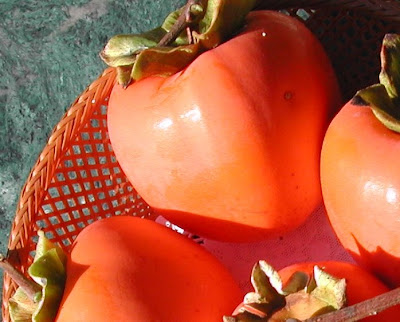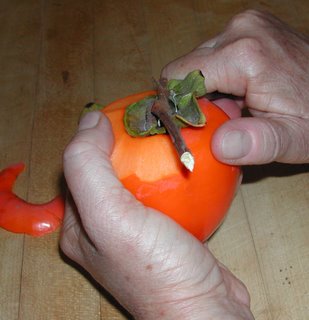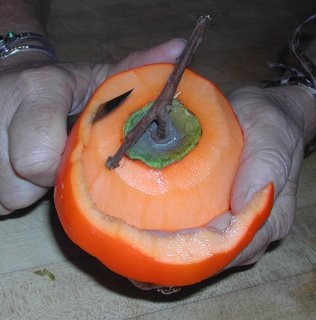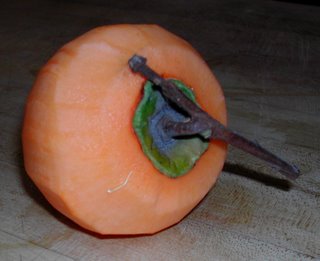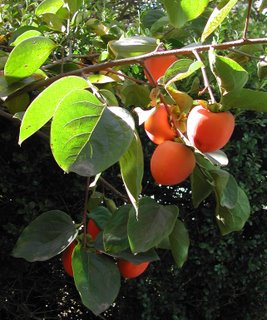 It’s that time of year in So. California when the Persimmon trees are laden with fruit and you realize you only need a couple of persimmon puddings for the holidays, so what the heck are you going to do with all those persimmons.
It’s that time of year in So. California when the Persimmon trees are laden with fruit and you realize you only need a couple of persimmon puddings for the holidays, so what the heck are you going to do with all those persimmons.
I’ve tried freezing them whole like billiard balls (in case I need a batch of persimmon bread or cookies during the year), but I already have a freezer filled with persimmon balls and no room for anything else. So when I heard about a persimmon massage class that our local Slow Food group was giving, I decided that might be the solution.
Apparently massaged persimmons yield luscious dried fruit far superior to other dried forms and in Japan when Hoshi Gaki (the massaged fruit) is given as a gift at New Years, it’s considered a special treasure and is said to bring good luck. So here’s a lovely way to distribute excess fruit to your friends at the end of the holidays.
First you pick firm persimmons leaving the stem attached to the fruit. In fact, in Japan, they usually break off part of the branch that the stem is attached to, so you get a little “t” at the top.
You’ll need a small paring knife to remove the top, leaving the stem and part of the calyx.
If you rest the tip of the knife against the front side of the stem and then rotate the persimmon as you cut, you should get a nice flat top.
“Should” is the operative word here. but with a little practice they’ll be flat and the ones that aren’t smooth are still going to be delicious.
The next step is to hold your knife at a 45 degree angle and peel around the top edge to make a shoulder on the fruit.
I’m not sure why this is important but it gives the fruit a nice artistic look and in Japanese culture that is usually reason enough.
At this point you can use your peeler to remove the rest of the skin.
Peel lightly and only peel over the tip once. Any thin places run the risk of breaking before the inner pulp is dried and allowing it to leak out.
The outside will become sort of leathery and will form a bag to hold the moister interior as you massage it. The purpose of the massage is to move the moisture around to help the persimmon dry evenly.
This persimmon is peeled and ready to hang. But since I have 30 bries to deliver this morning, you’re going to have to wait for the next blog update to see how to line them up for massage.
In the meantime, you can go to Jeff Reiger’s Hoshi Gaki page at Penryn Orchard Specialties. Jeff was our teacher at the Slow Food class and he sells a variety of persimmons as well as his own hoshi gaki.

